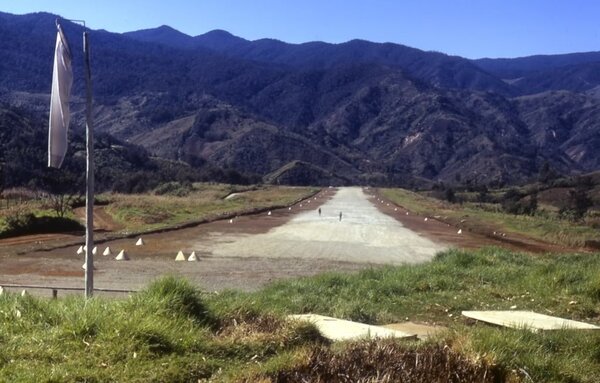-
Posts
1,752 -
Joined
-
Last visited
-
Days Won
39
Content Type
Profiles
Forums
Gallery
Downloads
Blogs
Events
Store
Aircraft
Resources
Tutorials
Articles
Classifieds
Movies
Books
Community Map
Quizzes
Videos Directory
Everything posted by poteroo
-

Light aircraft crash, S.A. Riverland
poteroo replied to onetrack's topic in Aircraft Incidents and Accidents
Loads of inconsistency in both CASA and RAAus 'policy' on low flying training. Recent articles pleading with pilots not to fly into IMC, and to do IF training, yet the same principles are not being applied to low level. Were both bodies to adopt a realistic look at pilot training, they would understand that correct training not only instils a healthy regard for IMC or LL, but does better equip the pilot to cope with emergency requirements. Yes Nev, all pilots actually 'need' some basic training in both LL and IF. The current RAAus policy on LL is simply 'in denial' happy days, -

A good first aircraft Piper, Cessna or other?
poteroo replied to FlyAdventure's topic in AUS/NZ General Discussion
The condition here is 'learn how to fly it'. That's a big ask these days as there are fewer instructors about with Cessna t/w experience - real time, not a pretend endo in the circuit of a major airport. Unless you can really handle the C180/185 in crosswinds, and short fields - you're heading for some scary arrivals. Low timers beware! The corrosion proofing was available in only the later models of C180 - I think from 1975 onwards for the last 4 years of production. As Nev says, these were usually for the seaplane market : they were distinguishable by the cross bar struts from the instrument panel up to the spar. They are not cheap to run, and I tend to agree with some of the earlier posters about the PA-28 series. Cessna SIDS have really made inroads on the C172 numbers. Corrosion inspections are a must on any of the older GA types, regardless of make & model. Own a 2 seater but rent a 4 seater = good advice. In the 29 years that we owned a C170, C180, and C182 - we flew 95% of the time with the rear seats out and 2 up. Your kids grow up, they find other more exciting things to do, and then they disallow the grandies from flying because the 'old man' doesn't look capable of flying safely!! Be practical - be 'selfish'! happy days, -

RAA pilots will require CASA medical certificate under part 103?
poteroo replied to aro's topic in Governing Bodies
CASA Avmed have long been a law unto themselves, but are improving. In February this year, I had a pacemaker fitted to correct a missing beat in the ticker. I had noticed that my recovery from any energetic cycling was becoming slower and that I was needing a daily 'nana-nap' of ever longer time. After 8 weeks, the cardiologist checked everything and declared I was ok to go. Avmed disagreed, and insisted on 12 weeks - 'policy' they said. At the 12 weeks point, they discovered that they did not hold the original Holter Monitor data that lead to the pacemaker being required back in Feb. After much angst, it turned out to be residing in my DAMEs computer. It wasn't Avmeds fault. Finally, I had my Class 1 re-instated: and without any additional limitations. I'm back instructing in both GA and RAAus, and can fly VFR twin charter if I want. I'm enjoying my instructing as never before - nothing like a scare! It appears to me that CASA do have a 'grand plan' for 'recreational' aviation, and that it is evidenced by the converging of the RPC and RPL standards, the MTOW changes, and the medical standards. It could end up with a stratified recreational licencing system with the medical requirements determining what MTOW is yours, whether you have CTA access, and whether you can instruct. With instruction, I can only hope that they sensibly reduce the Part 141 requirements, rather than raise the RPC training requirements - but that's for another thread perhaps. happy days, -
Yes, much too fast to respond to terrain ahead of you, especially if it is just visible through cloud & or drizzle. Why? - because the refraction of light by the water droplets creates an illusion that the terrain is further away than it really is. So, a combination of higher than safe speed, plus the illusion, can mean any last second turn may still be too late. What I've seen in almost every case where a pilot tucks in too close under a cloud base, particularly if it is also drizzling, they will fly into a lower patch of cloud. The usual reaction is to push the nose down, rather than decrease power and lose height over a shorter distance - all of which just increases the speed, and decreases the margin should you need to turn away from terrain. It creates a scary feeling and certainly spooks most pilots. One of the very 1st things that I teach pilots on a low level training course is, (before going <500ft agl), to slow down via power reduction, get some flap extended perhaps, trim the aircraft to a safe manoeuvring speed - and then use power only for descent/climb from there. All lower level, limited visibility manoeuvring should be via power only. Everything will need a power change - climb/descent/turns. I hope that we see something positive result from this tragedy. ATC needs a friendlier face and GA traffic should be encouraged to transit Coffs rather than take risks dodging wx in the hills.
-
I'm going to answer this post if I can. 1. Stay with the 172 and get your RPL 2. You can't swap to RAAus and do your cross-country - stay with the 172 3. Unless you plan to go thru lots of CTA, or do CPL - just do RPL 4. Do your cross-country navs in the 172 5. Include Class D CTA during these navs - you don't need Class C If you had asked the Q about where to start, then I'd have said start with RAAus, (RPC), then do navs in RAAus, then switch over to GA, and convert to RPL. All your endorsements carryover to GA. This route is definitely cheaper. Good luck. Redcliffe isn't a great place to learn due the winds, but it is what it is. Caboolture probably easier. happy days,
-

One way strips [new Backcountry 182 vid]
poteroo replied to Garfly's topic in AUS/NZ General Discussion
Horses might hurt a bit, but their rellies don't come after you, (as the offending pilot), waving bows & arrows - these days its' probably more like AK-47s! We always had to watch for them wandering across the strip on takeoff because the parking area was usually a tiny bit of flat ground off to the side, and when you were ready to go - out and off, no line up. Ist thing they would hear was 300HP roaring straight toward them! The pic of Ompkali is typical. It was about 13% slope and the was no go round from 300 ft on final. Several accidents here and it was closed in the 80s I believe. The pic of Guwasa shows a citizen wandering across well down - probably make it! The pic of Ambunti, (near sealevel on the Sepik R), shows a mighty big hill at the other end, which meant no go rounds from about the big tree on the nearside of the R. It was also slippery - rainfall about 150 inches. The strip at Efogi was notoriously steep, (17%), with a dogleg halfway and around 4000 amsl. This pic from a different era....a Twin Otter on final at about the decision point for landing. Efogi sits over the valley from Kagi, and next to Brigade Hill - both places of past battles on the Track. enjoy. -

One way strips [new Backcountry 182 vid]
poteroo replied to Garfly's topic in AUS/NZ General Discussion
Good opportunity to post a couple more PNG pics. Here, it's less the length of strip, but the lack of power to get out of them. Lucky most were steep! At 8400 amsl, Kegsugl was the highest strip in PNG. Mt Wilhelm,(15,000) is just in LHS of pic but under cloud. A very intimidating strip, with average DA 11,000, and a 7% slope. 2nd pic is Wonenara in the Eastern Highlands also. Approx 5200 amsl, but over 10% slope, probably only 700m, and always with crosswinds. It was closed in the 70's after several serious accidents. -
Wondering if there had been any changes made to the surface area of aileron, or the rigging of same with these mods? It didn't look like there was any effect from what he claimed was full aileron, though it's too far distant to see what deflection there was. Also can't really see whether there was rudder input to try to lift the stbd wing. The whole design of the thing shouts that it will be very susceptible to wind on the ground.
-
He was really optimistic in opening up the power when you could see the wind was already lifting his left wing. Your ailerons are useless until you have probably 30-40 kts flowing over them. He did mention 30 kt gusting winds, then calm, and looking into those storms in the background, plus the virga off higher storms in some early frames, I'd say he was a microburst victim. Really feel for him. Many of us have had similar loss of directional control but been lucky to have sufficient speed to be able to fly away - albeit away from the strip - and lived to fight another day. One thing I noticed was that he was more worried about the 'tower' approval than making a 'safer' takeoff. The tower usually can't see whether you are taking off or landing 20-30 degrees 'accross' the runway, and wouldn't care, provided you didn't conflict with a parallel runway traffic. Whatever it takes with high wing taildraggers!!
-
Yesterday was '9/11' day in the USA. It was also the 69th birthday of this fabulous Cessna 170A. Hard to believe but it only has about 5000 hrs TT, (that we can document anyway!). Of this, I flew over 2000 hrs into every 2nd paddock in the WA wheatbelt. It also trained at least 60 pilots to a tailwheel endorsement. I owned this beauty for 13 years from 1992 until 2005. Imagine my surprise when it arrived here in Albany, WA on the 10th Sept on a circumnavigation of Australia. Not only a few pics on the ground, and a talk with owners, but noted the string of improvements that have been made since in left here. Couldn't help myself so we flew out with it and took a couple pics. Going so slow that the RV needed flap!! happy days,
-

760kg upgrade and CASA consultation
poteroo replied to Kyle Communications's topic in AUS/NZ General Discussion
Well, maybe. VANS published info for 9/9A is for MTOW of 727 kgs up to 795 kgs - (registered mine as 795kg). For stalling speeds, VANS published numbers are 41.6 kts for 727 kgs, and 43.3 kts for 795 kgs - ( mine stalls at 43/44 KIAS... didn't work out CAS!). So, my assumption from what's been discussed is that my RV9A fails to fit inside the 760 kg limit, and that rules it out, regardless of the fact it has Vso <45kts. It stays in GA for now because the individual owner, regardless of whether they built it under EXPERIMENTAL or not, cannot change the manufacturers numbers without themselves providing the afcts to backup their claims. Very few RV9As will fit under 760kg without having been built specifically for this purpose. With regards to my Brumby 610, which currently has a Vso of approx 37kts (POH), at MTOW of 600kg - I'd guess that it would not exceed 45kts even if it was loaded up to 760kg MTOW. However, it's unlikely that it will perform too well, and in any case, the manufacturer probably doesn't have, and isn't going to spend big dollars, on doing all the testing required to increase its' MTOW. It would take quite a bit of work - and for what benefit? If the intent is to fill both the seats with 120kg people, and then fill the fuel tanks to 135L - most aircraft would weight 375 kg BEW + 240 crew + 100 fuel + 20 bags = 735kg. Pretty close to the new limits! I'd be very, very skeptical of it's takeoff and climb performance being anywhere near what it currently has. That means a lot of new performance figures would be required for the aircraft or the POH would be demonstrably incorrect and therefore, unusable. Frankly, this 760 kg MTOW limit promise is one which CASA cannot in all seriousness contemplate, without it costing a heap of development time and money for the industry. IMHO, it's a mirage, floated to placate a few noisy birds in the industry. happy days, -
If you want an omelette:you have to break eggs. Progress in aviation has almost always involved increased risk for those participating. We don't need a bloated bureaucracy keeping our industry in cotton wool. As others have said: they kept away from the non-informed public, and took the risks upon themselves only. Their only mistake was to involve the press & media - who seem only able to sensationalise any 'aviation' event. Great stuff!!
-
That's true Nev, but there's a cohort of the human race who believe they are exempt from the use of common sense, or any sense for that matter! Never is this more evident than with pilots, where there is an over abundance of hubris. In respect of competency checks: just how frequent is enough. I've flown with charter companies which required 3 monthly line checks with the CP, or a C&T pilot, and that didn't eliminate the CPLs and ATPLs making some stupid decisions. It seems that competency checks, (a la CASR 61.385), will not eliminate over confidence, and spur-of-the-moment risky operational decision making. Frankly, I can't see this ending well for AF, regardless of how many friends there are in the Senate.
-
Councils have an unfortunate tendency to being sucked in by smooth talking entrepreneurs. Read the last meeting minutes and attend the next meeting to ask a few probing questions. You can expect your CTAF to become worse than the Tower of Babel in no time flat. Good luck!
-
The ATSB handling of the data, such as they are, doesn't match up with real life numbers such as hours flown. I tend to 'agree' with AF that some invalid conclusions were drawn from it. However, perception is reality as far as the general public is concerned and I think the era of VFR AF activities is about to close. Based on a '7x higher probability', the ATSB should have been calling for an immediate cessation of all VFR AF flights. Instead, they have obfuscated, dithered, and concluded with a report that really does not address the root causes of these accidents. Frankly, PPLs should not be placed in a position where they are possibly going to initiate an AF flight when all the indicators say it just isn't doable in VFR. CPLs with a CIR are really what AF need, and the sooner they accept it - the better. We can't rely on teaching existing pilots more human factors etc etc: many are already quite resistant to any behaviour education, and are going to take risks no matter what. Look at how many LL accidents and incidents still occur - despite huge promotional efforts to prevent it. Same with VFR into IMC.
-
Good advice:the imperative is not to load up the wing when you have altitude below you in the centre of the valley. 20 deg flap and 60-65 KIAS is right on the edge for an unmodified C182. NB: the demo here was done with a C182 fitted with a Sportsman STOL kit - which is a step upwards in lower speed flight. For the average pilot in a 172, 182 type - use 65-70KIAS and 15-20 deg flap. Note also that as the nose was allowed to fall away in the late stages of the 180 turn - the IAS rapidly increased from 60 to 80. But, still within the white arc. Without flap being deployed, expect this to be faster again. Of course, this demo was done in clear skies - it looks a whole lot different if you are doing it under a cloud base with rain along the mountains.
-
I'm sure they would all be gainfully employed in re-writing the CASRs.
-
True, but the telling factor is in how much the wing is loaded up during turns. At lower IAS, and lowish heights above terrain - it's vital that power is increased before/as the turn is initiated. This increases lift, and avoids increasing angle of attack to prevent height loss in the turn. It varies from type to type, but more often than not, too much flap is used for lower level flight. This uses up extra power, which could have been used to improve the turn safety. Sure, flap reduces Vs, but not so much that you can ignore the negating effect of the extra drag due the flap extension. Before allowing the aircraft to descend to 'low' level, it should have been trimmed to the target speed that you consider, or the POH says, is recommended for slow flight. After this, all the pilot needs to do is vary power settings to cause the nose to fall, or rise - or the IAS to be increased into turns. Makes all the difference if your head is 'out the window' and there are no inside distractions. The other factor in these lower level/lower speed turns is whether the ball is precisely in the centre. Too many pilots are guilty of trying to increase the rate of turn by pushing in too much rudder, (usually in LH turns), causing a skidding turn. This is a surefire way to stall the inside wing and spin under. Recovery takes thousands, not hundreds, of feet altitude. Nothing really dangerous about a steeper turn with power, which many pilots are afraid of at lower level. The laws of aerodynamics apply just as truly at 300ft agl as at 3000ft.
-

RPC X-Country - What to study in Winter
poteroo replied to Top Gun Jabiru's topic in AUS/NZ General Discussion
What really makes for interesting decisions on go/whoa is if the strip is quite sloping and there is precious little over-run at the lower end. It makes your decision point quite close to the top end of the strip because you must take into account the poor braking on sloping wet grass strips. Especially those of > 7-8% slope. What we tend to forget in performance calcs is that the (unsupercharged) engine output is significantly reduced with altitude, plus the coeffic of lift is lower than 1.0 and so the v2 of the equation must be faster to create lift. Probably why PNG has its' own 'P' charts, and I'd be sure that other high altitude countries like parts of Africa, Nepal, the Vietnam highlands, European Alps, and the Rockies and Andes of the Americas all have modified P charts for each and every aircraft type. happy days, -

760kg upgrade and CASA consultation
poteroo replied to Kyle Communications's topic in AUS/NZ General Discussion
True - LL isn't really defined by the FAA, so provided you don't endanger anyone it's accepted. But DYO? FF is another thing, as I thought that this required a pilot to 'be competent' in whatever activity they wanted. Probably spelled out under the FAA Part 61. How do they achieve this.? Can't imagine that people just go out and DYO formation? Aerobatics? - wasn't aware this was ok in LSA in the US? Good luck to them learning under a DYO system. Our Aussie RAAus system is only mirroring the GA system here, (Part 61), and it is not going to change as long as CASA exist. happy days, -

760kg upgrade and CASA consultation
poteroo replied to Kyle Communications's topic in AUS/NZ General Discussion
All very exciting for the US pilots, but it really doesn't have much relevance in Australia. RAAus already is able to offer a huge range of endorsements to the RPC - read them all in the Endorsement Syllabus in the Ops Manual, or better still, have a look at the Endorsement Form on the website. An RAAus pilot can already become endorsed on a manually adjustable propeller control - it doesn't require much in the way of understanding and certainly isn't such a difficult flying control that the average pilot can't manage it in addition to flying the aircraft. Of course, they are expensive. But, a pilot here can also become endorsed to retractable undercarriage, to tailwheel, to waterborne, to formation flight, to low level flying, and to glider and hang glider towing. As well, we don't have any limitation on the speed that we can fly an RAAus aircraft at - the US suffers from the 120kts limitation that has always been with them. We are soooo much better off than our US counterparts. Thank your lucky stars for what we already have. happy days, -
Good news indeed. But, your experience speaks volumes for the industry experience in dealing with these vexatious despots. Now would be a very smart time to write a letter to the editor of the local paper, with a copy to Council, congratulating them on their support of small operators at the airport. You might also note that the City have already adjusted landing charges for light aircraft from a charge everyone basis - to nil charge if under 1000kg. I know, not great if you have a >1000kg machine, but at least it provides all RAAus aircraft with essentially freedom from landing charges. Bravo!! As to the prior permission required for non-VH registered aircraft: you might be best to work with your new and more enlightened manager to have this modified. At the very least, for any resident aircraft, or for regularly visiting (non VH-), aircraft you should be able to organise a once off 'approval' to cover you annually, or even better. happy days,
-

RPC X-Country - What to study in Winter
poteroo replied to Top Gun Jabiru's topic in AUS/NZ General Discussion
Was flying across NW Mexico with a Yank mate in his 206, (many moons back), with me LHS and he desperately trying to get a LORAN fix. It's pretty mountainous country, and we were trying to avoid a Mex Govt AFB, which had a bad reputation for confiscating aberrant US aircraft. After much pushing and pulling knobs, he swore at it, turned it off, and said to me - "guess you know how to use pilotage to navigate - hope you do, because we're in the S unless we get a fix" I'd actually been reading a 'sectional' chart since we left Nogales, and with my trusty 1963 model CR-3, gave him a fix immediately. He couldn't believe that there 'pilotaaage ' had saved the day. Aussie cred was raised considerably. happy days,


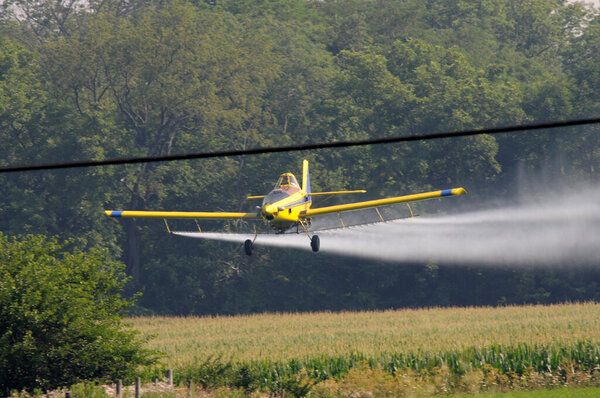






.thumb.jpg.e01c4d0f95b6a16fcdb48f04735ba9eb.jpg)
.thumb.jpg.16d79ebd908e6eb0e465ca9a86d458f2.jpg)

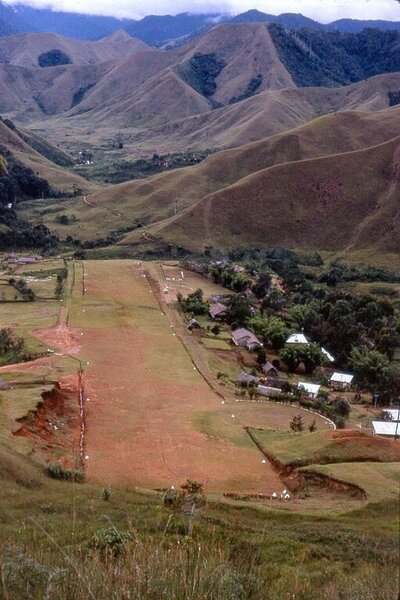

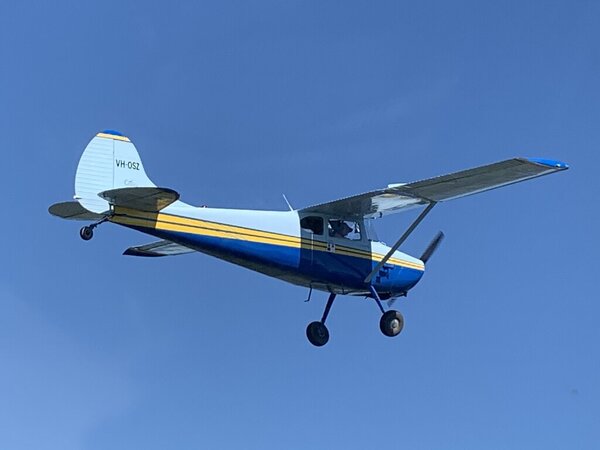

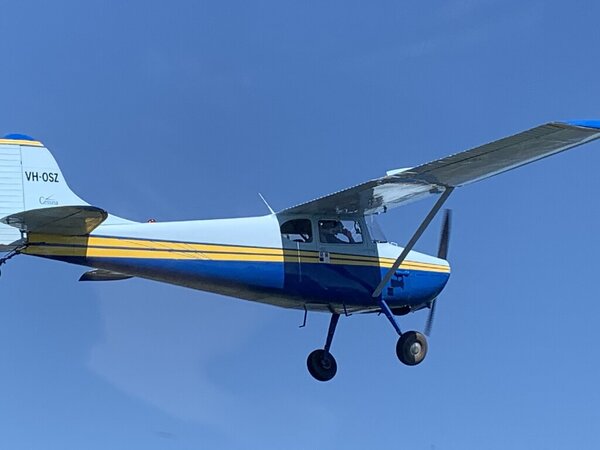
.thumb.jpg.9056ebfd55e4cb4f6c0d74c255477db6.jpg)




